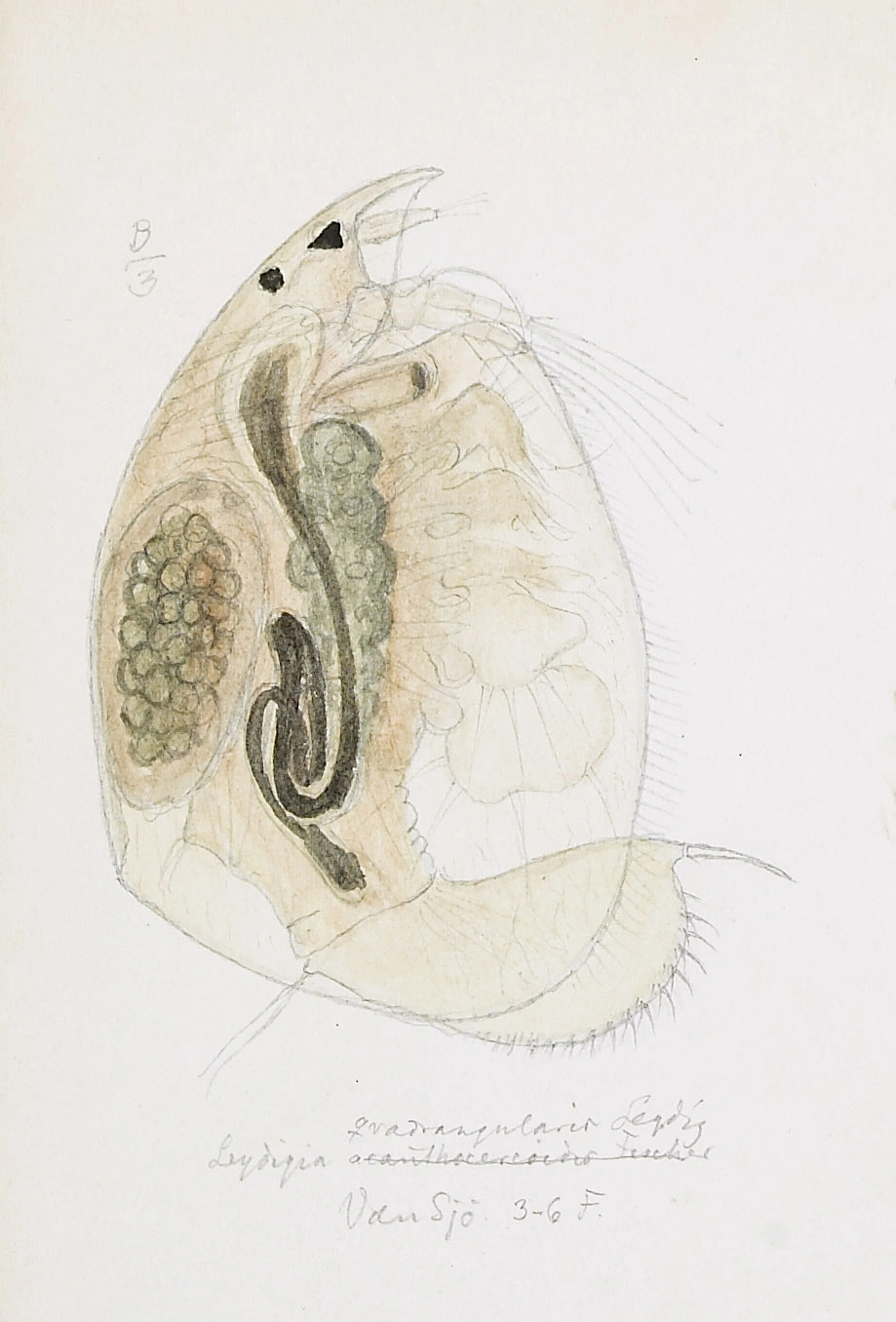Leydigia leydigi
Leydigia leydigi lives in the upper layer of the bottom sediment and charcterized by a carapace which always is protruding from the carapace.
Key characteristics
Leydigia leydigi (female)
Seen from the side, the carapace of Leydigia leydigi has a more or less rectangular form with the highest point in the posterior end. In contrast to the majority of cladocerans, its eye is smaller than the oscellus. The postabdomen is very spectacular, always protruding from the carapace. Its dorsal side is curved with the highest point near the middle. Laterally it has 9–12 bundles which each consist of 5–8 setae of varying size. Its colour varies from flaxen to a dark yellowish red colour. Some specimen may also be free for colours.
Female: Length 0.7–1.0 mm
Male: Length 0.6–0.8 mm
Ecology and distribution
L. leydigi is a littoral species only recorded in a few lakes southeast of Oslo. Two records were made by G.O. Sars in the late 19th century. All lakes lie in marine sediments and may be characterized as mesotropic/eutropic. L. leydigi lives in the upper layer of the bottom sediment, often at some meters depth and is truly overlooked.
| Vitenskapelig navn | < 4,5 | 4,5 - 4,9 | 5,0 - 5,4 | 5,5 - 5,9 | 6,0 - 6,4 | 6,5 - 7,0 | 7,0 - 7,4 | > 7,5 |
|---|---|---|---|---|---|---|---|---|
| 0 | 0 | 0 | 0 | 0 | 0,2 | 0,4 | 0 |
| Vitenskapelig navn | < 1,0 | 1,0 - 1,4 | 1,5 - 1,9 | 2,0 - 2,9 | 3,0 - 3,9 | 4,0 - 4,9 | 5,0 - 6,9 | 7,0 - 9,9 | > 10,0 |
|---|---|---|---|---|---|---|---|---|---|
| 0 | 0 | 0 | 0 | 0 | 0 | 0 | 0 | 0,9 |
| Vitenskapelig navn | < 0,01 | 0,01 - 0,09 | 0,1 - 0,9 | 1,0 - 9,9 | 10,0 - 99 | 100 - 999 | > 1000 |
|---|---|---|---|---|---|---|---|
| 0 | 0 | 0 | 0 | 0,5 | 0 | 0 |
| Vitenskapelig navn | < 100 | 100-299 | 300-499 | 500-699 | 700-999 | >1000 |
|---|---|---|---|---|---|---|
| 0,5 | 0,1 | 0 | 0 | 0 | 0 |
